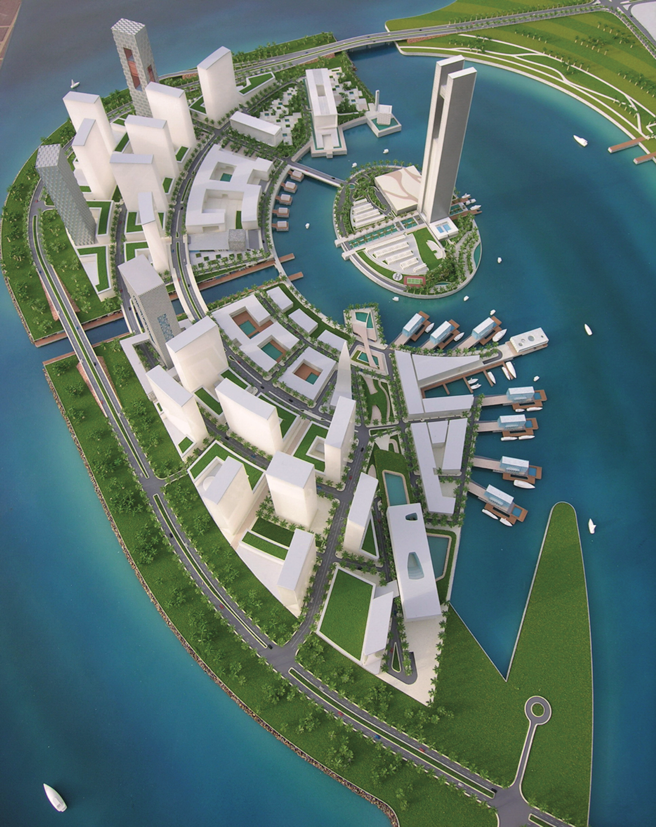Much like other members of the Gulf Cooperation Council (GCC), Bahrain is in the midst of a construction boom. However, Bahrain has become a particularly attractive alternative to other markets in the region that are already saturated. Furthermore, the kingdom has made legal changes to allow foreign ownership in some projects.
Surge of activity
Recent weeks, in particular, have seen a surge of activity in the sector. Abu Dhabi Investment House (ADIH) unveiled its $100 million Sunset Hills project in Bahrain. The mixed-use development will have villas, townhouses, apartments, and a retail component. It will be located adjacent to ADIH’s $1 billion Al-Areen project, and cover 47,000 m2 with a built up area of 56,000 m2. In addition, Marina West, Bahrain’s first residential beachfront community, launched its sales initiative for the development’s luxury freehold residences in the 75,000 m2 gated community.
In addition, there has been tangible progress in Bahrain’s ongoing real estate projects. The first phase of the Bahrain Financial Harbor, the Financial Center, is progressing ahead of schedule and by the end of last month nearly 92% of work had been completed. Moreover, Abu Dhabi Investment House recently announced that piling work on its $90 million development, Lagoon Bahrain, will be finished in March. The Lagoon, part of Amwaj Islands off the coast of Muharraq, will be made up of eight low-rise buildings for high-end consumer retail, leisure and food and beverage outlets. Covering a total land area of 55,000 m2, the development is due for completion in September.
On February 7, the kingdom played host to a three-day forum to review the sector’s current boom and future prospects. It aimed to study factors behind the real estate boom in GCC countries, analyze future prospects, explore means of averting problems hindering the sector’s development and provide a favorable atmosphere to maintain such development.
Bahrain’s growing importance
Bahrain’s importance to the regional real estate sector has grown over the last few years. With Kuwait and Dubai attracting large numbers of investors to the extent that property prices are soaring, Bahrain has emerged as a new favorite for investors. The international press reported in January 2006 that residential property prices in Bahrain had risen on average some 200% over the previous three years. Despite this phenomenon, Bahrain’s prices remain about 45% cheaper than those in Dubai and Doha.
Bahrain’s real estate appeal has brought new developers to the market, such as Al-Marsa Real Estate, part of the local Kanoo Group. Other beneficiaries are banks, which have witnessed increased demand for house-buying vehicles. shariah-compliant financial tools are also on the market.
In spite of the momentum that is propelling real estate forward in Bahrain, there remain significant questions to be answered. The kingdom is increasingly aware of the negative socio-economic repercussions that the sector’s boom may facilitate, namely disenfranchising lower income bracket and first-time buyers. Additionally, infrastructure remains a worry, especially as Manama Municipal Council recently announced that permission to start construction work on the $2.5 billion Bahrain Bay waterfront residential, commercial and retail district could be delayed by councillors worried over traffic congestion. More specifically, the municipal authority wants to change the current proposed entrance and exit routes, saying they could create massive jams in an already congested area.
Issues of infrastructure have not deterred developers from taking matters into their own hands. For example, Riffa Views Signature Estates recently marked a major milestone with the signing of a $69 million infrastructure contract with Cybarco Bahrain Ltd. Under the contract, Cybarco—in a joint venture with Tebet Enterprises—will undertake one of Bahrain’s largest-ever infrastructure projects to build roads, telecommunications cabling, electricity and water supplies for the luxury residential development.










